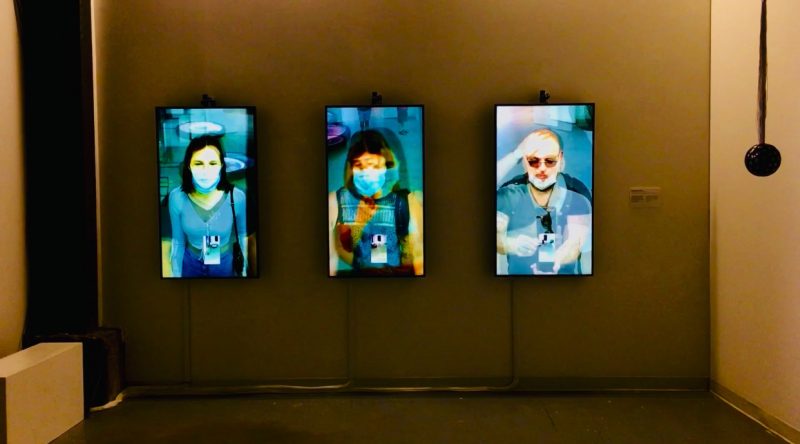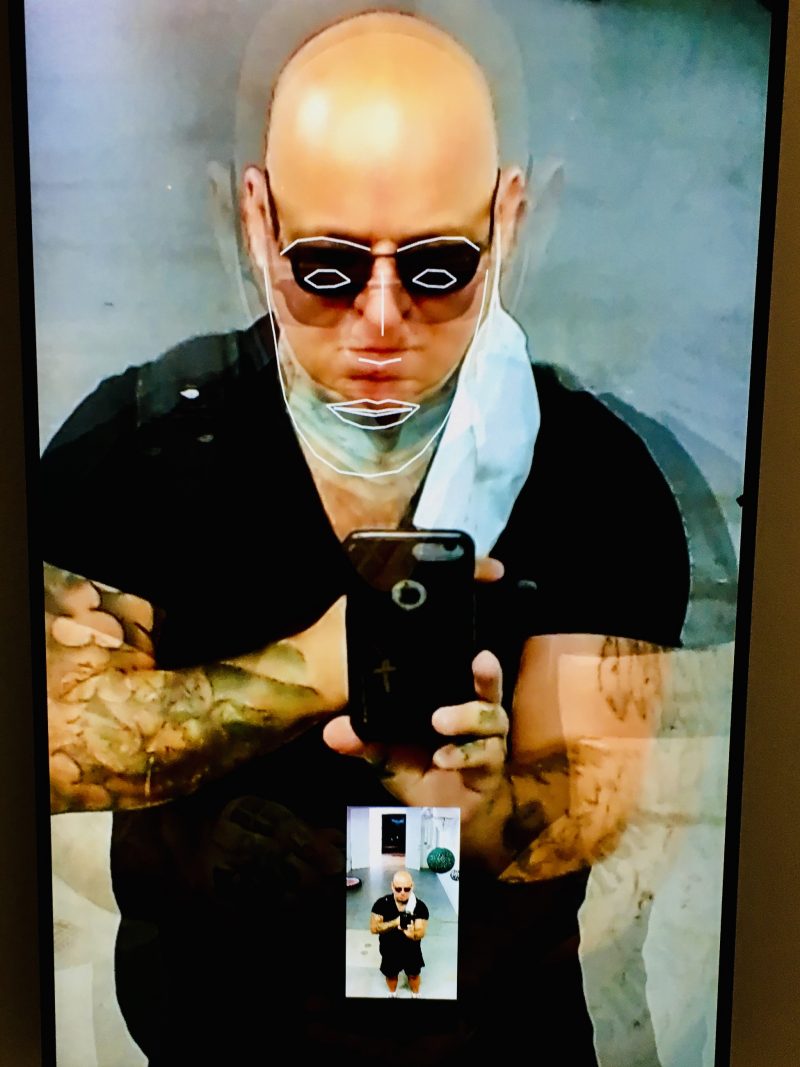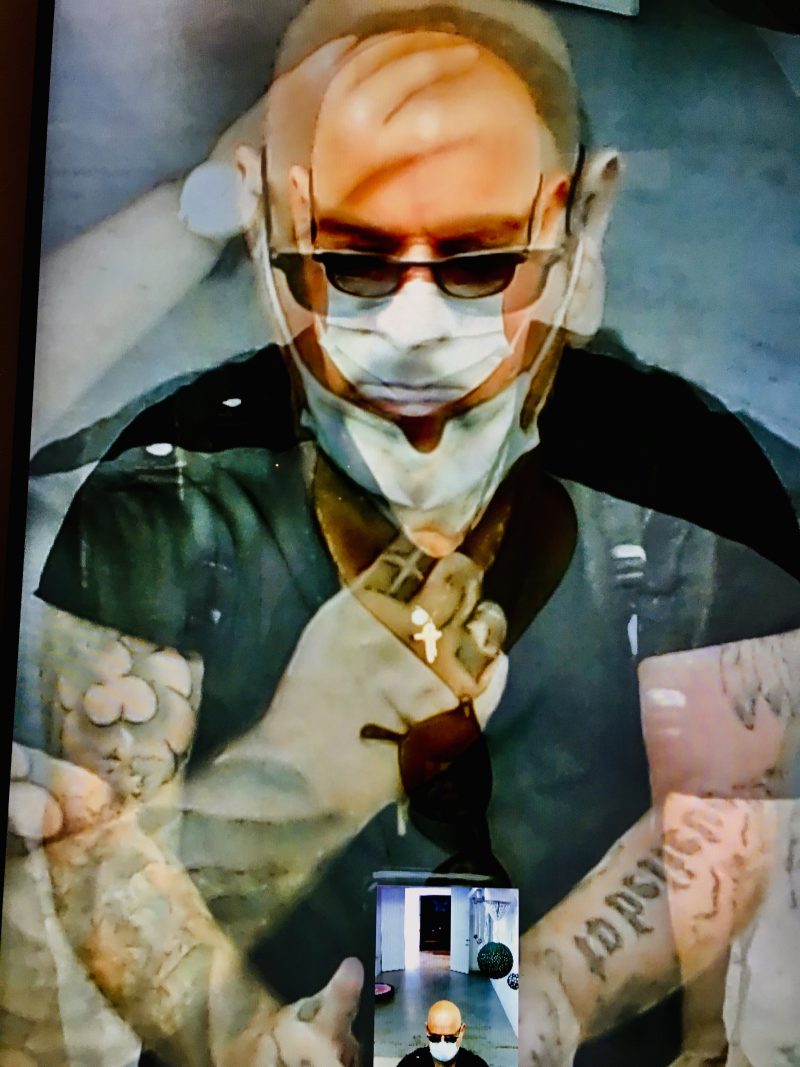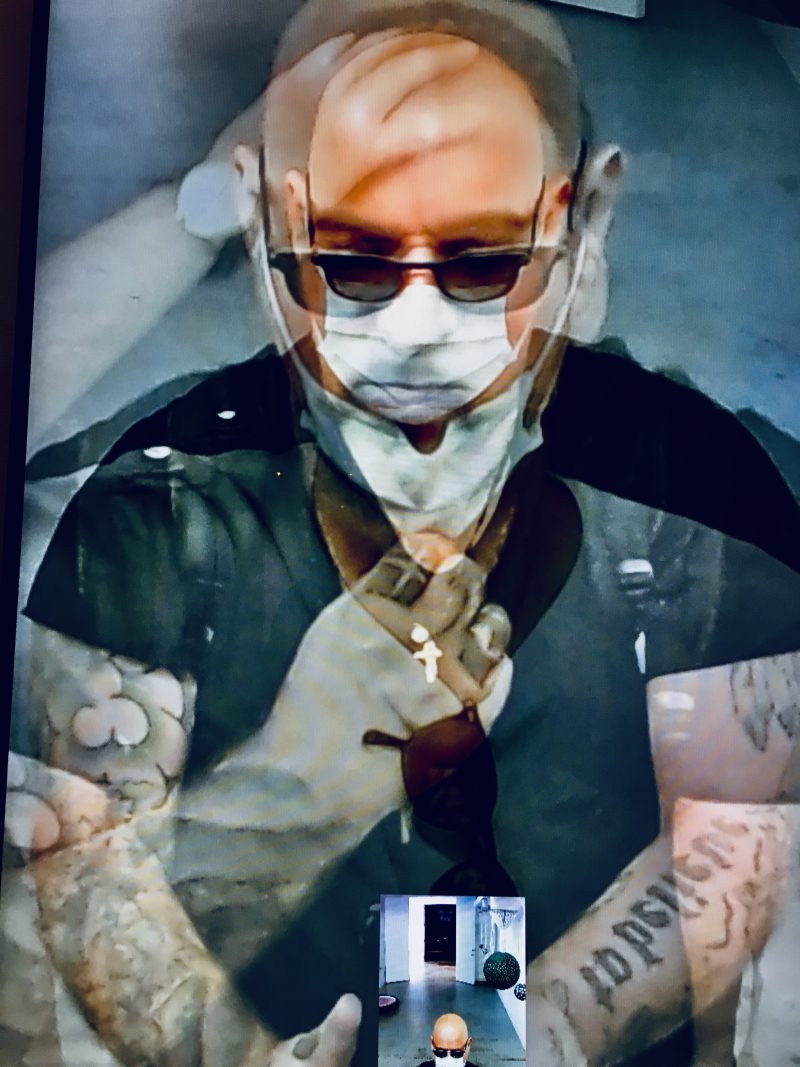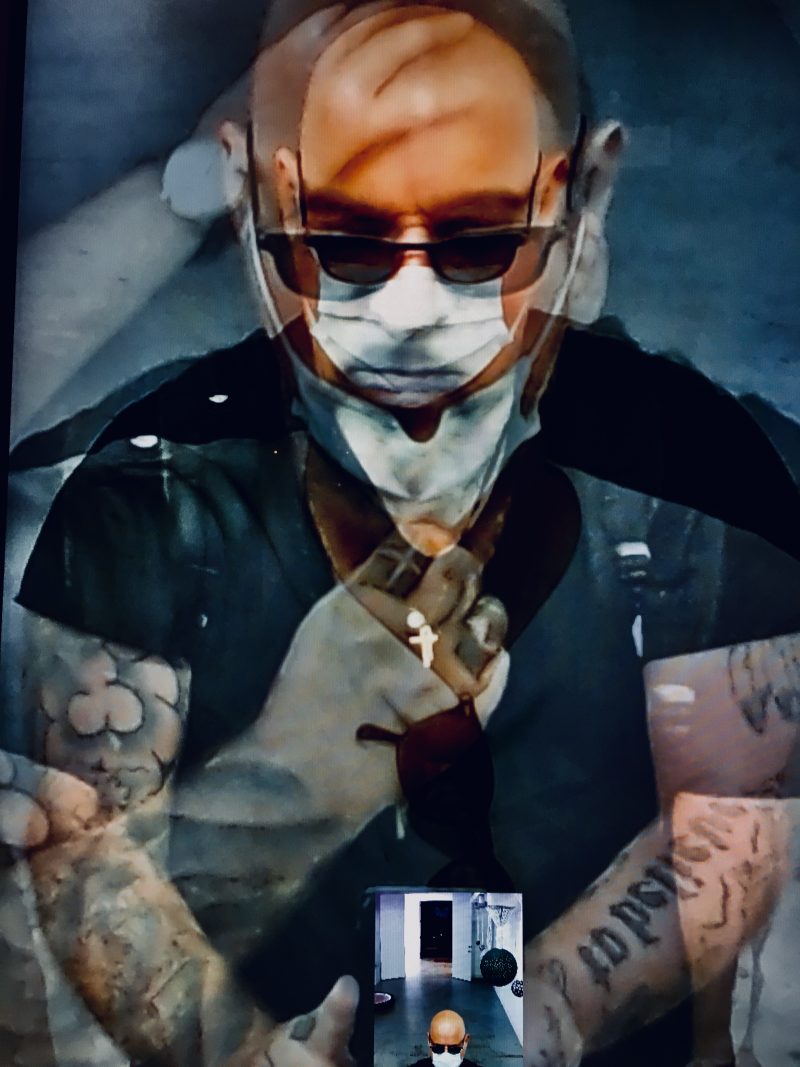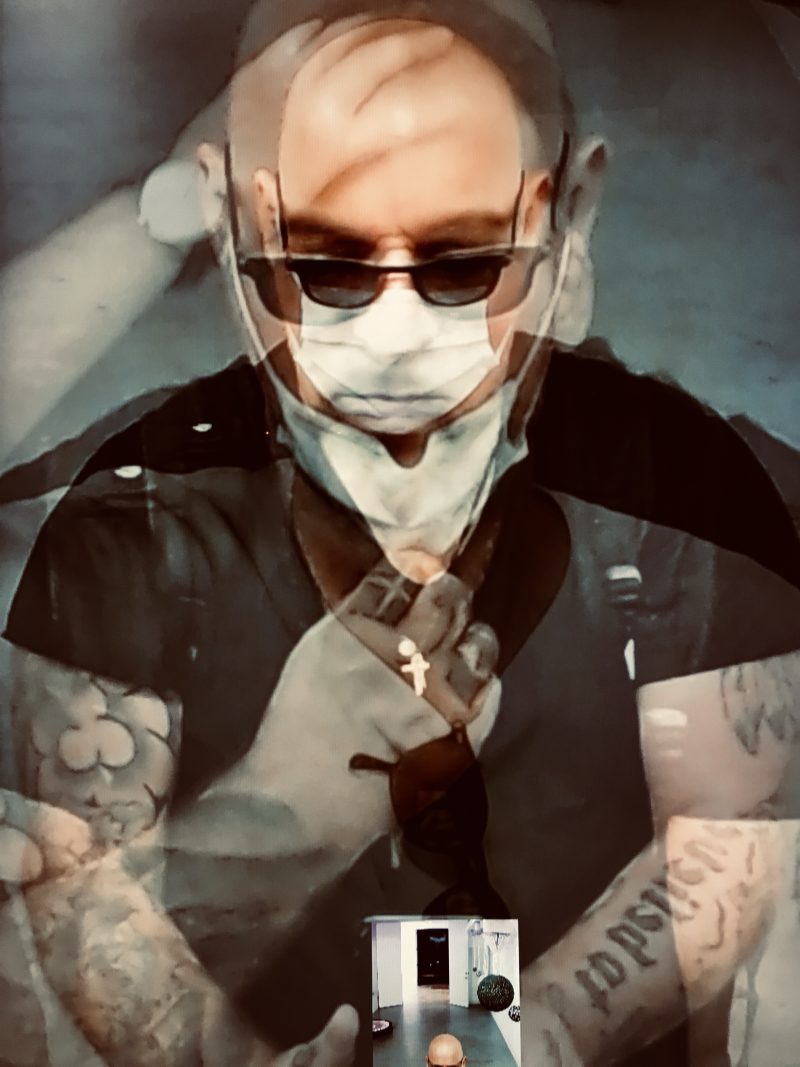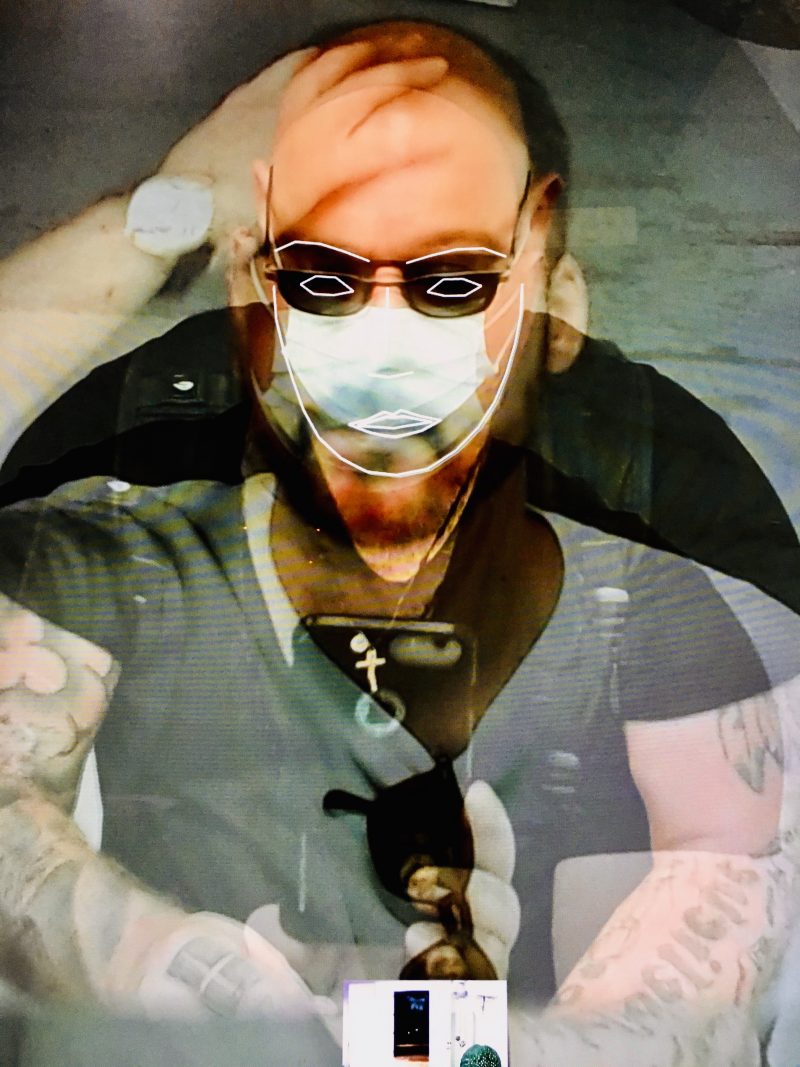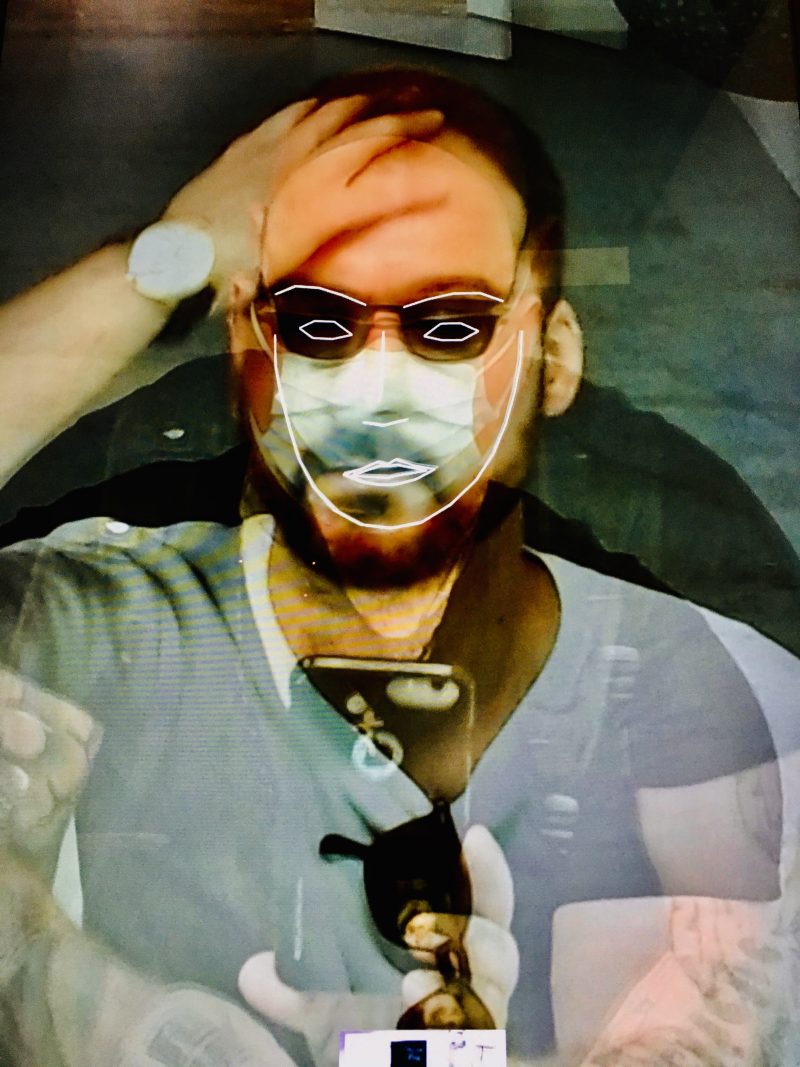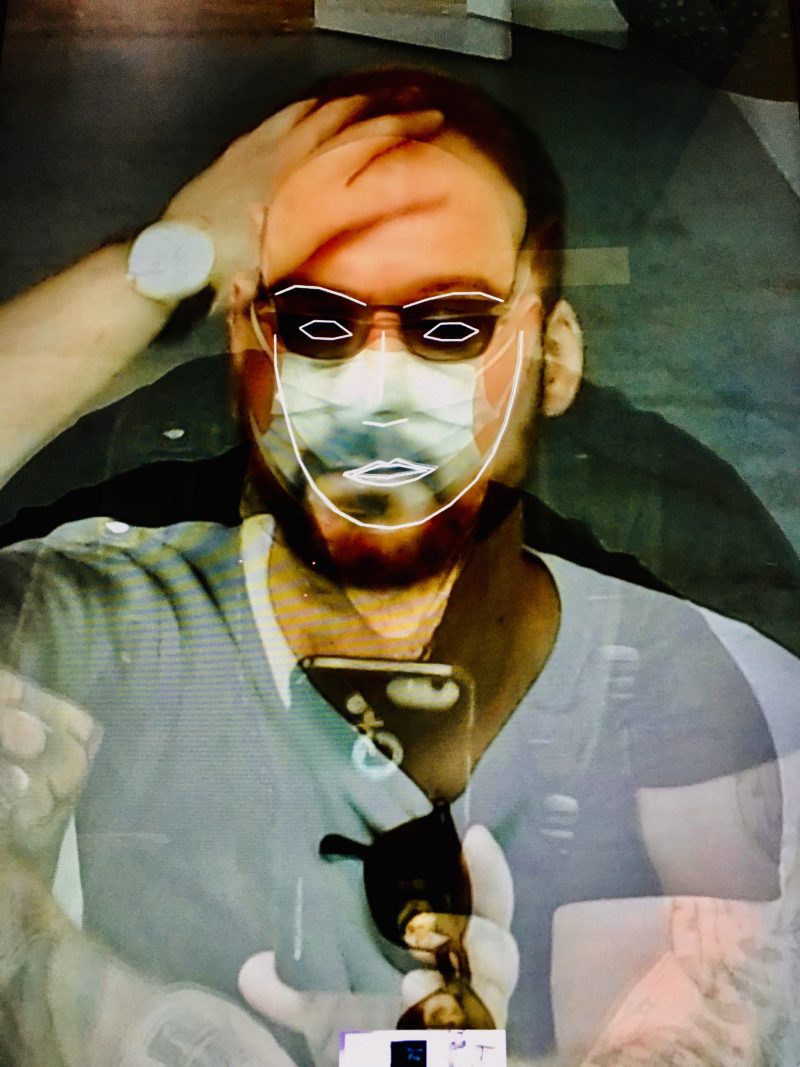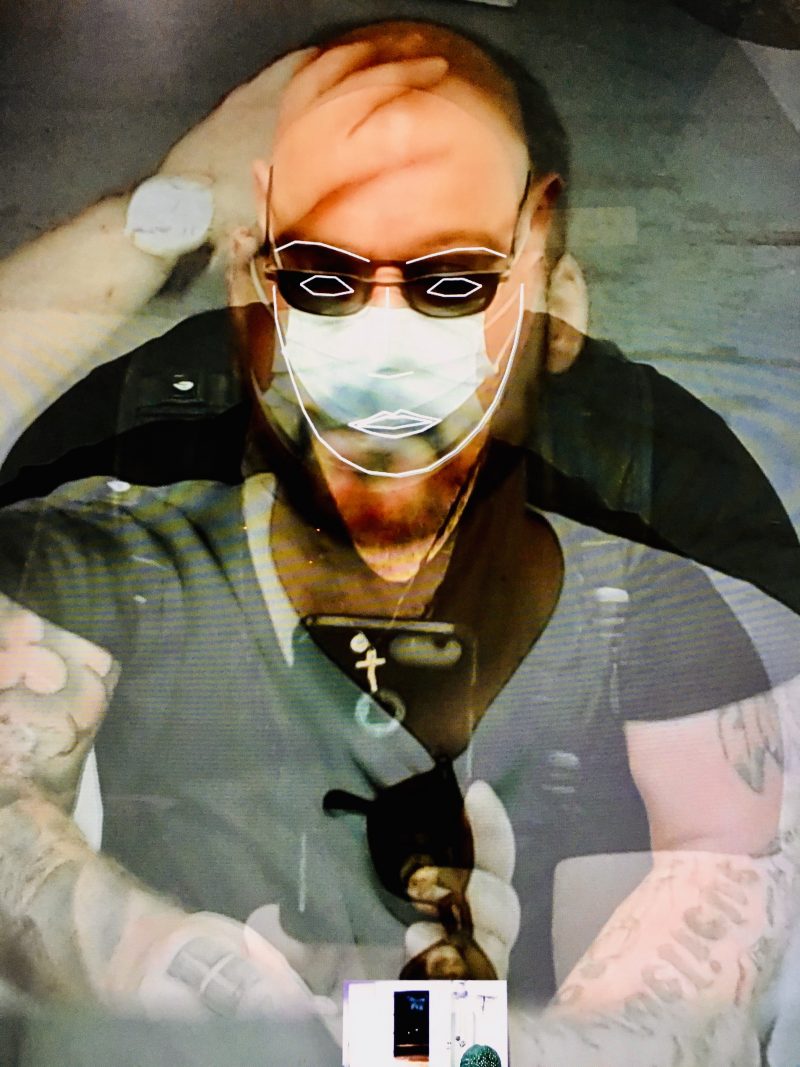Rafael Lozano-Hemmer @ Arsenal Contemporary, Montréal 2021
Arsenal Contemporary Art Montreal is pleased to host the internationally-acclaimed artist Rafael Lozano-Hemmer for a creative residency lasting three months. The Montreal-based Mexican artist and his team of 15 developers will be exhibiting recent works and developing new ones around the themes of proximity and shared experience. Ambitious, immersive audiovisual installations will transform one of Arsenal Contemporary Art Montreal’s 18,000 sq. ft. exhibition halls.
The title “Cercanía” means physical proximity in Spanish but also implies intimacy and empathy.
Despite its title, the exhibition is designed to respect social distancing: while some works are interactive, the visitors won’t need to touch any surfaces and will be able to keep a distance of at least 2 metres from others.
Comprising of three World premieres, three North American premieres and six Canadian premieres, this exhibition includes a 30 m long interactive projection room, a 2,300-channel sound sculpture, a computerized shadow play, as well as a water fountain that “draws” ephemeral portraits of people with cold water vapour. Guest artists will join Lozano-Hemmer’s team in developing new pieces over the course of the residency, among them are singer/songwriter Patrick Watson and philosopher Brian Massumi.
The residency is a prospect of Atmospheric Memory, the acclaimed immersive exhibition that Lozano-Hemmer premiered at the Manchester International Festival, which will be presented at Arsenal Contemporary Art Montreal in the fall of 2021.
___
Rafael Lozano-Hemmer on Art During A Pandemic
“This residency emerges from the unprecedented COVID-19 pandemic. Originally we had planned to stage a massive time-based immersive exhibition at Arsenal Contemporary Art Montreal called “Atmospheric Memory”, featuring dozens of interactive artworks activated by the breath, touch and voices of the visitors. This project had to be postponed to next year and we decided to develop instead an activity designed specifically to respect social distancing and the best health and safety practices against the pandemic. We selected recent or new works that do not need to be touched (no buttons, levers or touch-screens) that allow at least two metres between visitors at all times and, critically, that can help us interrupt the narrative of the devastating virus by presenting connective artworks that stimulate an embodied and shared experience for both mourning and continuity.
With the continued devastation of COVID-19, experts have predicted that Museums will take years to recover, that crowded shows will be a thing of the past, that art will take place in online viewing rooms or VR, that we are effectively trapped in the glass jail of videoconferencing. I don’t agree: immunity, vaccines, treatments, prevention and testing will no doubt get us through this pandemic eventually, as they have before. In the near future we will hang out, embrace new friends, go vote, live shared experiences and make new relationships. We will be out in force, in solidarity, in protest, in mourning. The great American composer Frederic Rzewski proposed that “coming together” was at the very core of being human. As always, art will be the greatest reason for our bodies to share space: in concerts with others, in front of a painting that moves us, at an activist performance or immersed in a responsive environment. We have to plan now for this massive re-embodiment as if our life depends on it because it does, politically, aesthetically, psychologically, financially, environmentally.”
– Rafael Lozano-Hemmer
___
Rafael Lozano-Hemmer (b. 1967, Mexico City) is a media artist based in Montreal since 2004, where he runs “Antimodular” a studio team of 15 people coming from 7 countries. He creates platforms for public participation using technologies such as robotic lights, digital fountains, computerized surveillance, media walls and telematic networks. He was the first artist to represent Mexico at the Venice Biennale with an exhibition at Palazzo Van Axel in 2007. He has also shown at Biennials in Cuenca, Havana, Istanbul, Kochi, Liverpool, Melbourne NGV, Moscow, New Orleans, New York ICP, Seoul, Seville, Shanghai, Singapore, Sydney and Wuzhen.
His public art has been commissioned for the Millennium Celebrations in Mexico City (1999), the Expansion of the European Union in Dublin (2004), the Student Massacre Memorial in Tlatelolco (2008), the Vancouver Olympics (2010), the pre-opening exhibition of the Guggenheim in Abu Dhabi (2015) and the activation of the Raurica Roman Theatre in Basel (2018).
Collections holding his work include MoMA, Guggenheim and Museo del Barrio in New York, Musée d’art contemporain, Musée des beaux-arts de Montréal, La foundation Phi, Giverny Capital and Majudia in Montreal, TATE and Science Museum in London, Jumex and MUAC in Mexico City, DAROS in Zurich, MONA in Hobart, ZKM in Karlsruhe, NGV in Melbourne, SAM in Singapore, and many others. In the past two years, Lozano-Hemmer was the subject of nine solo exhibitions worldwide, including a major show at the Hirshhorn Museum in Washington DC, the inaugural show at the AmorePacific Museum in Seoul, and a mid-career retrospective co-produced by the Musée d’art contemporain de Montréal and SFMOMA.
In 2019, his immersive performance “Atmospheric Memory” sold out at the Manchester International Festival and his interactive installation “Border Tuner” connected people across the US-Mexico border using bridges of light controlled by the voices of participants in Ciudad Juárez, Chihuahua and El Paso, Texas.
residency lasting three months. The Montreal-based Mexican artist and his team of 15 developers will be exhibiting recent works and developing new ones around the themes of proximity and shared experience. Ambitious, immersive audiovisual installations will transform one of Arsenal Contemporary Art Montreal’s 18,000 sq. ft. exhibition halls.
The title “Cercanía” means physical proximity in Spanish but also implies intimacy and empathy.
Despite its title, the exhibition is designed to respect social distancing: while some works are interactive, the visitors won’t need to touch any surfaces and will be able to keep a distance of at least 2 metres from others.
Comprising of three World premieres, three North American premieres and six Canadian premieres, this exhibition includes a 30 m long interactive projection room, a 2,300-channel sound sculpture, a computerized shadow play, as well as a water fountain that “draws” ephemeral portraits of people with cold water vapour. Guest artists will join Lozano-Hemmer’s team in developing new pieces over the course of the residency, among them are singer/songwriter Patrick Watson and philosopher Brian Massumi.
The residency is a prospect of Atmospheric Memory, the acclaimed immersive exhibition that Lozano-Hemmer premiered at the Manchester International Festival, which will be presented at Arsenal Contemporary Art Montreal in the fall of 2021.
___
Rafael Lozano-Hemmer on Art During A Pandemic
“This residency emerges from the unprecedented COVID-19 pandemic. Originally we had planned to stage a massive time-based immersive exhibition at Arsenal Contemporary Art Montreal called “Atmospheric Memory”, featuring dozens of interactive artworks activated by the breath, touch and voices of the visitors. This project had to be postponed to next year and we decided to develop instead an activity designed specifically to respect social distancing and the best health and safety practices against the pandemic. We selected recent or new works that do not need to be touched (no buttons, levers or touch-screens) that allow at least two metres between visitors at all times and, critically, that can help us interrupt the narrative of the devastating virus by presenting connective artworks that stimulate an embodied and shared experience for both mourning and continuity.
With the continued devastation of COVID-19, experts have predicted that Museums will take years to recover, that crowded shows will be a thing of the past, that art will take place in online viewing rooms or VR, that we are effectively trapped in the glass jail of videoconferencing. I don’t agree: immunity, vaccines, treatments, prevention and testing will no doubt get us through this pandemic eventually, as they have before. In the near future we will hang out, embrace new friends, go vote, live shared experiences and make new relationships. We will be out in force, in solidarity, in protest, in mourning. The great American composer Frederic Rzewski proposed that “coming together” was at the very core of being human. As always, art will be the greatest reason for our bodies to share space: in concerts with others, in front of a painting that moves us, at an activist performance or immersed in a responsive environment. We have to plan now for this massive re-embodiment as if our life depends on it because it does, politically, aesthetically, psychologically, financially, environmentally.”
– Rafael Lozano-Hemmer
___
Rafael Lozano-Hemmer (b. 1967, Mexico City) is a media artist based in Montreal since 2004, where he runs “Antimodular” a studio team of 15 people coming from 7 countries. He creates platforms for public participation using technologies such as robotic lights, digital fountains, computerized surveillance, media walls and telematic networks. He was the first artist to represent Mexico at the Venice Biennale with an exhibition at Palazzo Van Axel in 2007. He has also shown at Biennials in Cuenca, Havana, Istanbul, Kochi, Liverpool, Melbourne NGV, Moscow, New Orleans, New York ICP, Seoul, Seville, Shanghai, Singapore, Sydney and Wuzhen.
His public art has been commissioned for the Millennium Celebrations in Mexico City (1999), the Expansion of the European Union in Dublin (2004), the Student Massacre Memorial in Tlatelolco (2008), the Vancouver Olympics (2010), the pre-opening exhibition of the Guggenheim in Abu Dhabi (2015) and the activation of the Raurica Roman Theatre in Basel (2018).
Collections holding his work include MoMA, Guggenheim and Museo del Barrio in New York, Musée d’art contemporain, Musée des beaux-arts de Montréal, La foundation Phi, Giverny Capital and Majudia in Montreal, TATE and Science Museum in London, Jumex and MUAC in Mexico City, DAROS in Zurich, MONA in Hobart, ZKM in Karlsruhe, NGV in Melbourne, SAM in Singapore, and many others. In the past two years, Lozano-Hemmer was the subject of nine solo exhibitions worldwide, including a major show at the Hirshhorn Museum in Washington DC, the inaugural show at the AmorePacific Museum in Seoul, and a mid-career retrospective co-produced by the Musée d’art contemporain de Montréal and SFMOMA.
In 2019, his immersive performance “Atmospheric Memory” sold out at the Manchester International Festival and his interactive installation “Border Tuner” connected people across the US-Mexico border using bridges of light controlled by the voices of participants in Ciudad Juárez, Chihuahua and El Paso, Texas.
https://www.lozano-hemmer.com
